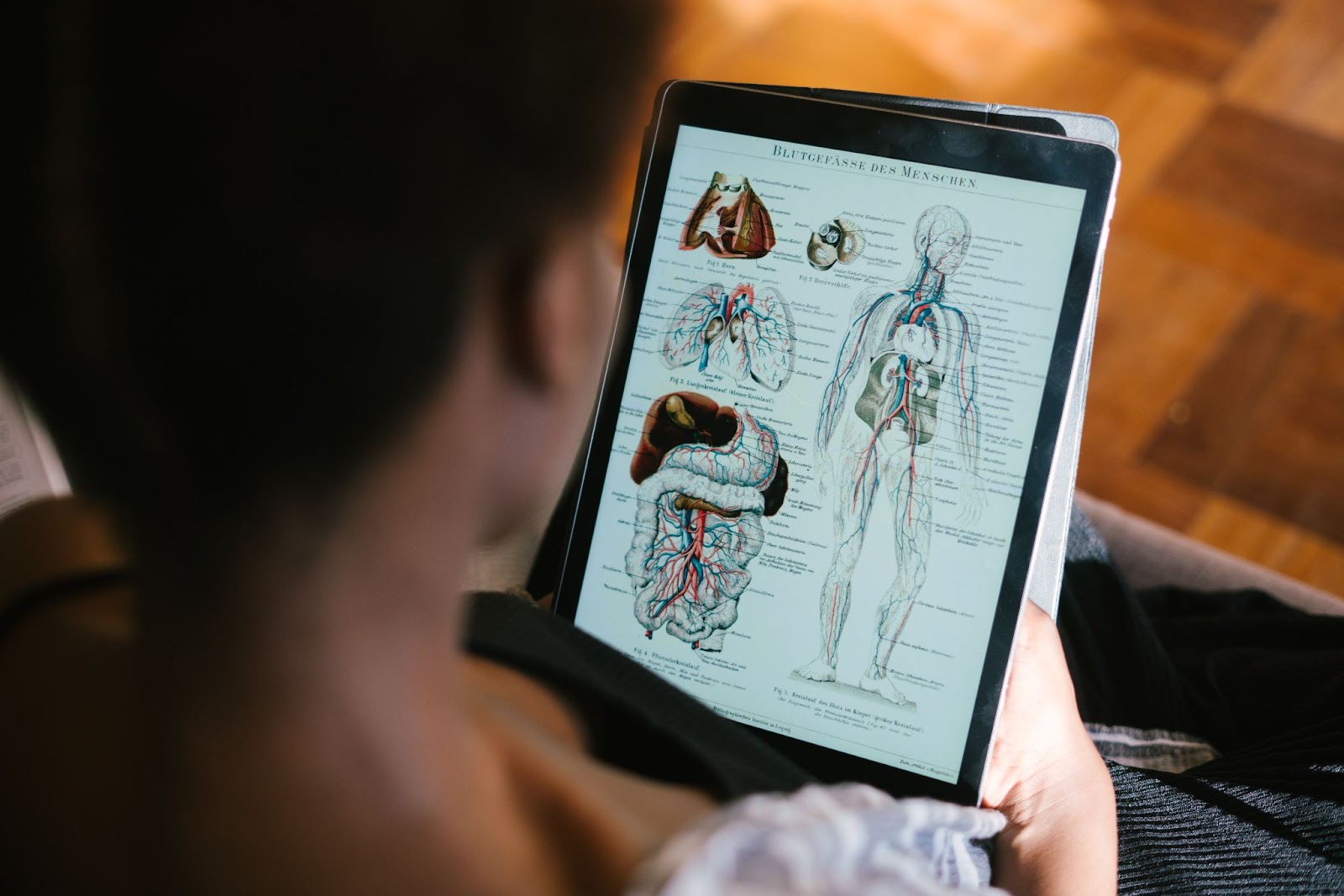A How-To Guide to Stimulating Your Vagus Nerve

If you haven’t heard of the vagus nerve before, now is the right time to get to know it better! It is the longest cranial nerve in our body, extending from the base of the brain through the neck, through the heart and lungs, to the digestive system, including the liver, spleen, and pancreas. The vagus nerve serves as a two-way communication pathway between the brain and gut, also known as the “brain-gut axis,” and controls unconscious functions such as breathing, digestion, and heartbeat. In addition, this nerve is the main player in the so-called parasympathetic (“rest and digest”) nervous system and controls your ability to relax and recover from stress.
The vagus nerve is cited in the literature as a key part of the mind-body connection. Therefore, it is believed that it is extremely important for our mental and physical health to maintain the tone of the vagus nerve. Low vagal tone is associated with a worse mood, anxiety, inflammatory conditions, a weaker immune system, and greater sensitivity to the effects of stress. Conversely, a strong vagus tone indicates the exact opposite: a positive emotional state and psychological balance. Fortunately, with simple daily exercises, we can stimulate and “strengthen” the tone of the vagus nerve, just like muscles.
Vagus Nerve
The vagus nerve is the longest cranial nerve. It goes from the brain to the abdomen, passing through the face and chest along the way. Although we refer to it in the singular, it is actually two different nerves—the left and right vagus nerves. Each consists of parasympathetic nerve fibers, with groups of nerve tissues innervating different areas, such as the ears, neck, pharynx, and larynx. There are also branches of the esophagus, heart, lungs, and digestive tract. Stimulation of the vagus nerve can therefore have an effect on all of these areas, as we will see in more detail later in this article.
What it Affects:
As a major component of the PNS, the vagus nerve is responsible for creating a state of relaxation in the organs and systems it affects. For example:
- Heart function: lowers blood pressure and heart rate.
- Lung function: increases bronchodilation.
- Gastrointestinal: sends satiety signals to the brain and increases gastrointestinal motility and secretions.
- Spleen function: detects and regulates systemic inflammation.
- Liver function: regulates gluconeogenesis, which is the process of making glucose from non-carbohydrate sources such as protein or fat.
On the other hand, when you are in a sympathetic state, the opposite of these effects occurs. Your heart rate and blood pressure increase, and your digestion is not a priority. Instead, you need the energy to go into digestion for the fight-or-flight response. But in a state of parasympathetic relaxation, much more of your energy can be allocated to digestion and other critical processes.
Vagus Nerve Stimulation Techniques
The vagus nerve can be strengthened and exercised like a muscle. Here are some simple techniques you can use to improve your health and stimulate the vagus nerve:
Positive Social Relationships
Medical research has shown that people who have good relationships with close family members, friends, and colleagues develop positive emotions such as serenity, joy, and hope. An important factor for better functioning of the vagus nerve
Cold
Exposure to cold (a cold shower or face wash) stimulates the nervous system. Studies show that when our body fights the cold, the entire body composition is activated—this is mediated by the vagus. Therefore, any type of acute cold exposure, even drinking ice water, increases the activation of this nerve.
Quiet Chanting
Repeating a mantra or prayer, mumbling, but also energetic singing all increase heart rate variability (HRV) in slightly different ways; indeed, singing for the vagus is like starting a small “pump” of good impulses through the nervous system. Similarly, there are products that allow vagus nerve stimulation at home, initiating the natural vibrations and movements and helping you achieve an even better effect. For example, singing activates the muscles in the back of the throat that activate the vagus. Singing increases the level of oxytocin in the body, better known as the “love hormone,” because people then feel closer to each other.
Massage
You can stimulate the vagus nerve by massaging the feet and neck (along the carotid sinus, located along the carotid arteries on both sides of the neck). By massaging your feet, you lower your blood pressure and activate the vagus nerve.

Massages like these have been used for centuries to help babies because they stimulate the proper functioning of the intestines, whose work is largely the fault of the vagus.
Yoga and Tai Chi
Stimulate the vagus nerve, which stimulates the entire parasympathetic nervous system. Studies have shown that the movements during yoga practice have a positive effect on calming the neurotransmitters in our brains. Especially beneficial for people struggling with anxiety or depression.
Breathing Deeply and Slowly
Our heart and neck contain neurons consisting of receptors – baroreceptors – which transmit the neuron’s signal to the brain. This process activates the vagus nerve, which is connected to our heart and has the effect of lowering blood pressure and reducing heart rate. Therefore, light breathing (approximately equal intervals of inhalation and exhalation) increases the sensitivity of baroreceptors and nerve activation; 5-6 breaths per minute can be very helpful.
Physical Exercises
There is no need to talk about the great importance of physical movement for the human body. They not only maintain muscle tone, relax the whole body, and regulate the proper functioning of growth hormones and lung and heart function but are also excellent stimulators of the vagus nerve. They have a beneficial effect on the brain and our mental health. Mild exercise is good for proper bowel function, which is also mediated by the vagus nerve.
Benefits of Vagus Nerve Stimulation
Interestingly, vagus nerve stimulation has a long history. At the end of the 19th century, the American neurologist James Corning used vagus stimulation for therapeutic purposes in patients with epilepsy. Since then, scientists have come a long way, and today stimulation of the vagus nerve through a device that transmits electrical impulses (so-called transcutaneous vagus stimulation, or tVNS) is approved as a therapeutic intervention in the case of epilepsy or depression that does not respond to therapy and in the treatment of migraines and pain.
But the story does not end there. A considerable number of studies indicate the additional benefits of stimulating this nerve, the ruler of relaxation. Most of the evidence is in favor of its anti-inflammatory effect, which in some studies has been shown to be useful in alleviating the symptoms of rheumatoid arthritis as well as other conditions that have an underlying inflammation.
Since it plays such an important role in the ability to relax and is the key link between the brain and the gut, stimulation of the vagus nerve can, among other things, help relieve anxiety and digestive system problems. The connection between the nerve and the whole body system is complex and has yet to be fully understood by modern medicine. But, with what we know now, it’s enough to start thinking about the underlying condition of some of your problems, which can likely be linked to the vagus.
It’s Time to Laugh
It is estimated that about 60% of the vagus tone is determined by our genetics, but the remaining 40% can be positively influenced by simple techniques! For example, slow, rhythmic breathing from the diaphragm is an effective way to stimulate the vagus nerve and release stress. Try to inhale and exhale no more than six times during the minute in order to feel the benefits of the technique. Similarly, meditation and yoga, as well as acupuncture, will improve the tone of the vagus nerve, as evidenced by traditional Eastern cultures.
But if you are not inclined to Eastern methods, there are other ways to stimulate the vagus, and perhaps one of the most fun is laughter. Of course, the best results are obtained when you laugh in the company of others; therefore, make time for your favorite friend and laugh happily. If you dance and sing along, all the better because it has been shown that dancing, as well as humming, since the vagus nerve is connected to the vocal cords, also has a positive effect on the vagus tone.
Gargling Can Also Stimulate the Vagus Nerve
For the ambitious, an excellent vagus stimulation technique is to gargle with water several times a day. However, you should not be “gentle,” but gargling must be loud and challenging, even tiring, because, in this way, you will activate the vocal cords and muscles in the back of the throat, which will then stimulate the vagus. For best results, it is recommended to gargle several glasses of water daily, sip by sip.
The last vagus stimulation technique is reserved only for the bravest and involves exposure to cold. Studies show that cold activates the parasympathetic nervous system or the vagus, so maybe this is a good reason to try a cold shower or, if nothing else, at least wash in cold water in the morning.

All the functions of the vagus nerve have yet to be discovered, but what we do know is that it is crucial for the functioning of the parasympathetic nervous system as well as communication between the brain and the gut. The more we stimulate the vagus with simple techniques like deep breathing or laughing, the more we activate the parasympathetic nervous system, which contributes to overall relaxation. This positively affects digestion, blood pressure, inflammatory conditions, immunity, and also our mental state, achieving an easier state of deep relaxation.
What's Your Reaction?
Deepak is a lover of nature and all things sporty. He loves to spend time outdoors, surrounded by the beauty of the natural world. Whether he's hiking, biking, or camping, Deepak enjoys being active and in touch with nature. He also loves to compete and push himself to his limits. Deepak is an avid cyclist, runner, and swimmer. He has competed in several triathlons and marathons, and is always looking for new challenges to take on.



